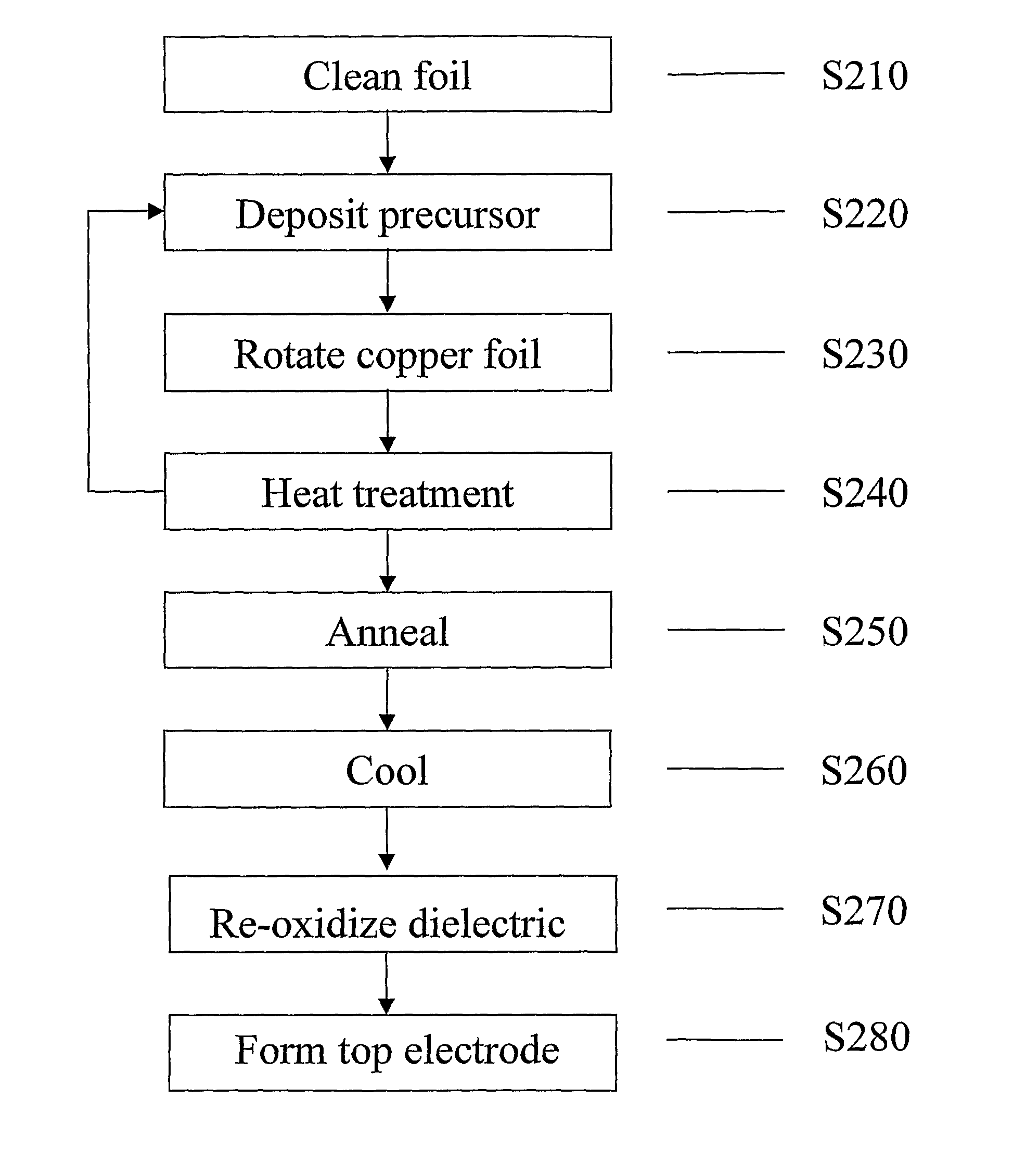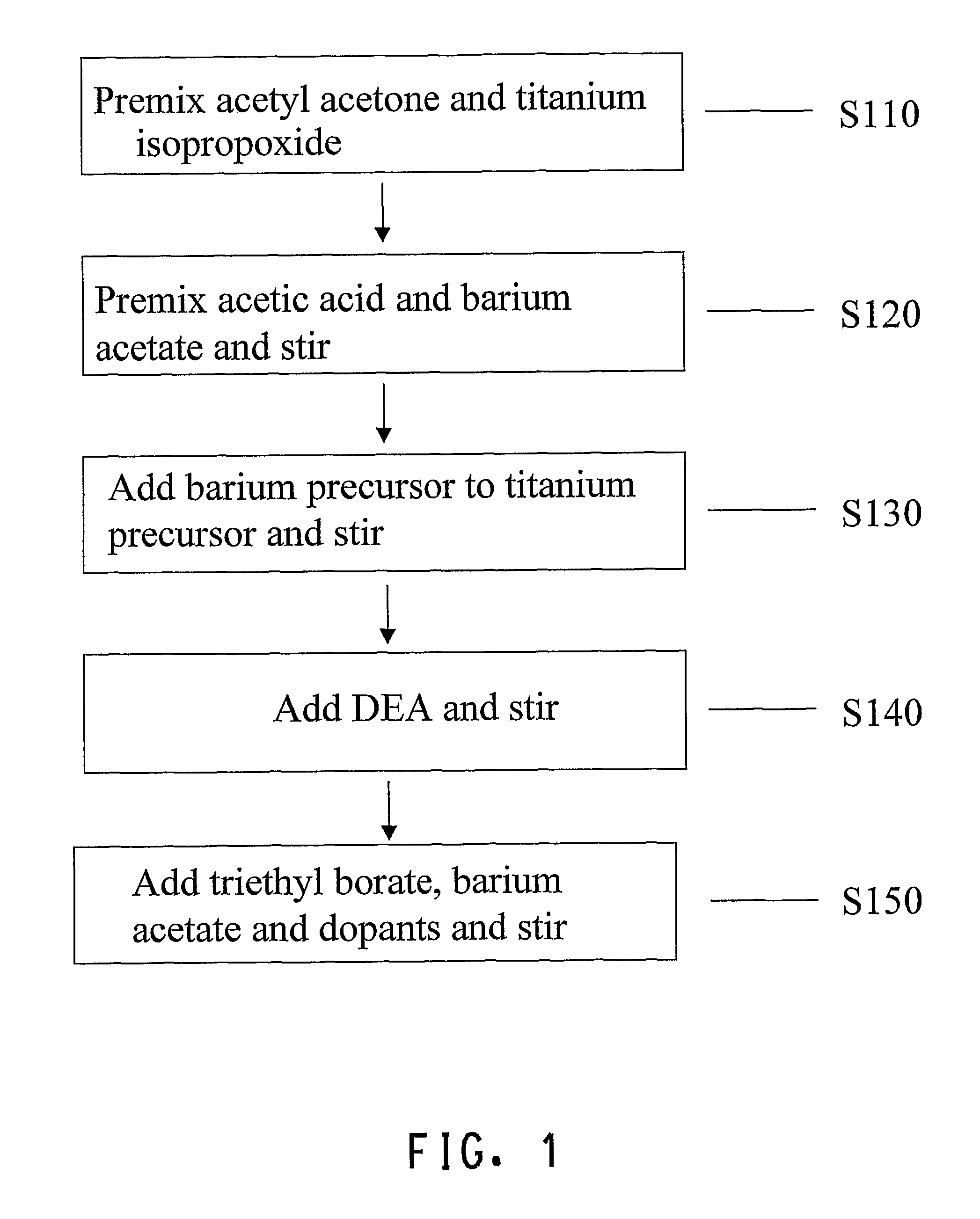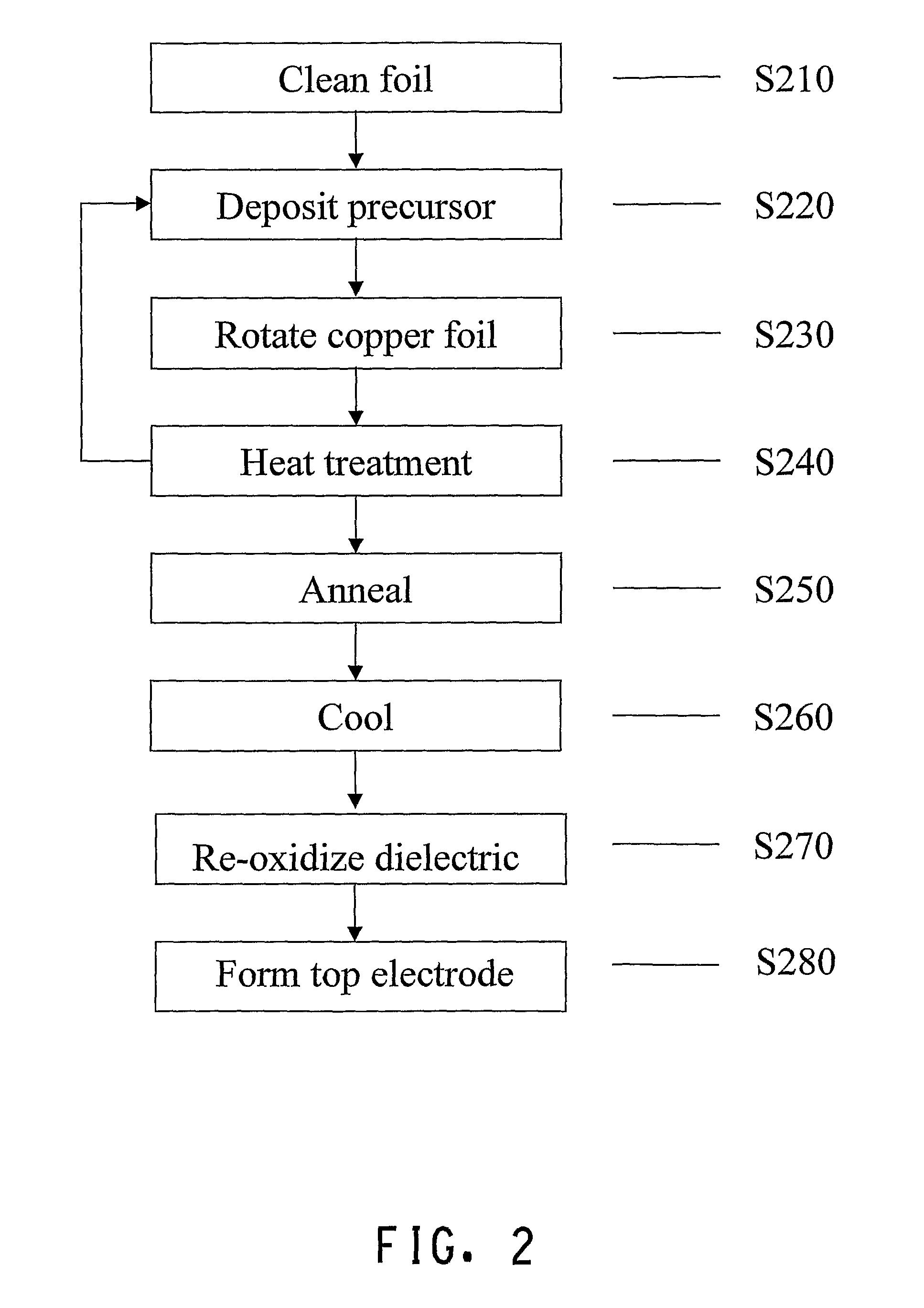Glass flux assisted sintering of chemical solution deposited thin dielectric films
a technology of dielectric films and glass flux, which is applied in the direction of fixed capacitor details, fixed capacitors, liquid/solution decomposition chemical coatings, etc., can solve the problems of reducing the dielectric constant, achieving high densification levels,
- Summary
- Abstract
- Description
- Claims
- Application Information
AI Technical Summary
Benefits of technology
Problems solved by technology
Method used
Image
Examples
examples
[0071]The following examples illustrate useful properties in dielectric compositions and capacitors incorporating these compositions, prepared according to the methods described herein. In the examples below, when an amount, concentration, or other value or parameter is given as a range, as one or more preferred ranges or as a list of upper preferable values and lower preferable values, this is to be understood as specifically disclosing all ranges formed from any pair of any upper range limit or preferred value and any lower range limit or preferred value, regardless of whether such pairs are separately disclosed.
examples 1-3
[0072]Barium titanate thin-film capacitors were prepared on copper foil using the process as depicted in FIG. 2. The precursor compositions contained 0, 0.69, and 1.38 mole % boron oxide glass flux additions by addition of the appropriate amounts of triethyl borate to the barium titanate solution. Annealing was performed at 900° C. for 30 minutes, under an atmosphere of a partial pressure of oxygen of 10−12 atmospheres. The dielectric compositions were re-oxygenated after the annealing process for 30 minutes at 450° C., under a partial pressure of oxygen of 10−4 atmospheres. The resultant maximum dielectric constants or relative permittivities of the barium titanate films were approximately 1600, 2250, and a little less than 3000 for 0, 0.69, and 1.38 mole % boron oxide respectively as shown in FIG. 4. The relative permittivity and loss factor versus field strength of the barium titanate film containing an addition of 1.38 mole % boron oxide flux is shown in FIG. 5. Cross sectional ...
examples 4-6
[0073]Barium titanate thin-film capacitors were prepared on copper foil using the process as described in FIG. 2. The compositions contained 0, 1.5, and 3.0 mole % boron oxide glass flux additions by addition of the appropriate amounts of tri-n-butylborate to the barium titanate solution Annealing was performed at 900° C. for 30 minutes, under an atmosphere of a partial pressure of oxygen of 10−12 atmospheres. Cross-sections of the dielectrics were made and focused ion beam (FIB) images were taken of the cross-sections to show the porosity level. The images are shown in FIG. 7 (a-c) wherein the dielectric layer is identified by the marker 700.
PUM
| Property | Measurement | Unit |
|---|---|---|
| dielectric constant | aaaaa | aaaaa |
| thickness | aaaaa | aaaaa |
| thickness | aaaaa | aaaaa |
Abstract
Description
Claims
Application Information
 Login to View More
Login to View More - R&D
- Intellectual Property
- Life Sciences
- Materials
- Tech Scout
- Unparalleled Data Quality
- Higher Quality Content
- 60% Fewer Hallucinations
Browse by: Latest US Patents, China's latest patents, Technical Efficacy Thesaurus, Application Domain, Technology Topic, Popular Technical Reports.
© 2025 PatSnap. All rights reserved.Legal|Privacy policy|Modern Slavery Act Transparency Statement|Sitemap|About US| Contact US: help@patsnap.com



